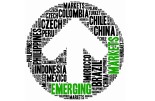Iris Lijkendijk: Diversification without Africa is not really diversification
Iris Lijkendijk: Diversification without Africa is not really diversification

This article was originally written in Dutch. This is an English translation.
Pension funds and their asset managers have so far invested very little in the 54 countries of Africa, despite the continent's attractive demographic and economic growth prospects and urgent development needs.
By Iris Lijkendijk
Those who invest passively on a global scale assume that their investments are well diversified. However, appearances can be deceiving. The MSCI All Country World Index (ACWI) consists of approximately 64% American shares. The ten largest companies now account for more than 21% of the index, and the IT sector alone represents 25%.1 So, those who think they are diversifying widely are in fact investing a large part of their assets in a single country and a single sector.
And where is Africa? The continent generally accounts for less than 1% of broad indices. This means that a region with a young and rapidly growing demographic profile, raw material reserves and relatively low debt levels is almost entirely overlooked by investors.
Africa as a blind spot
Africa is the youngest continent in the world: more than 60% of the population is under the age of 25.2 This demographic dividend is a powerful driver of future consumption, labour market growth and innovation. In addition, the continent has an abundance of raw materials that are indispensable for the energy transition, such as cobalt, copper and lithium. Absolute debt levels are also significantly lower than in many Western economies, making the macroeconomic starting position less vulnerable than is often thought.
So, anyone who really wants to diversify their portfolio cannot ignore Africa. The continent offers unique opportunities to spread risk and gain access to growth markets that are barely represented in traditional indices. But Africa is more than just an additional investment destination: it is here that, in addition to financial returns, the greatest social impact can be achieved.
Despite all the opportunities, the continent remains a blind spot for pension funds and their asset managers.
For pension funds, this directly affects their fiduciary duty. This is not only about securing sufficient returns, but also about guaranteeing that pensions can be paid out in a liveable world. Investments in Africa, particularly impact investments, contribute to this: they strengthen both long-term financial value creation and the social stability and sustainable development that are necessary for future generations.
Moreover, both the financial and social marginal returns in Africa are much greater than in developed markets. Whereas in Western countries the marginal impact of an investment is limited, an investment in Africa can make a real difference in terms of access to basic needs such as electricity, healthcare or education. These investments therefore contribute directly to the achievement of the Sustainable Development Goals.
What is still holding investors back?
Despite all the opportunities, the continent remains a blind spot for pension funds and their asset managers. The majority of investments remain concentrated in a limited number of developed countries. There are several reasons for this.
Firstly, risk perceptions and cognitive biases play an important role. Political instability, currency volatility and operational challenges are often overestimated. From an ethnocentric bias, Western standards and institutions are used as a benchmark, and African contexts are therefore more likely to be labelled as risky. And from an attribution bias, negative events are attributed to structural deficiencies in the region, while positive developments are dismissed as exceptions.
In addition, modern portfolio theory leaves little room for smaller and less conventional allocations. Pension funds are strongly focused on scale and benchmarks, which means that African impact projects simply do not fit within the existing frameworks. Furthermore, strict return requirements and the starting point of minimising risk as much as possible discourage investments in new or less liquid markets. Under the supervision of DNB, this results in a strong preference for established markets, while frontier markets offer opportunities for diversification and long-term value creation.
Finally, investors attach too much importance to credit ratings, which often fail to reflect reality. These assessments are focused on the past and biased against frontier markets with future potential. Low sovereign credit risk ratings are particularly restrictive: due to the so-called ‘sovereign ceiling’, companies in a country can rarely obtain a higher rating than the state itself. As a result, investments in Africa are often automatically excluded, regardless of the risk-return ratio. Passive allocations via indices such as the MSCI ACWI reinforce this pattern.
The way forward
The key to investing in Africa lies in a more forward-looking investment approach. Instead of relying on historical data, ratings and benchmarks, Africa requires a broader long-term perspective. By exploring future scenarios and options, biases and unjustified risk perceptions are broken down and opportunities become more visible. Scenario thinking also reveals that the lack of investment not only undermines stability in Africa, but also increases pressure on developed countries in the longer term: through increasing migration flows, climate challenges and geopolitical tensions.
In addition to a future-oriented approach, it is essential to make the actual risks more visible and manageable. Overestimating risks in Africa can be overcome with knowledge from development banks and impact investors and the use of tools such as the GEMs Risk Database, which provide transparency on performance and risk profiles. These sources are a valuable addition to traditional sources of information such as credit ratings and indices. This creates a more realistic picture of the actual risks and returns.
In addition, risks can be actively mitigated with the help of innovative financing structures. Blended finance, in which development banks or governments take first loss positions, lowers the threshold for institutional investors. Bloans, in which development banks bear the senior debt portion and pension funds can co-finance in parallel, offer comparable protection. In collaboration with specialised parties such as ILX Fund, pension funds can thus limit their risks and gain access to new markets with high growth potential.
In order to actually utilise these financing structures, adjustments in governance and portfolio approach are also necessary. With a total portfolio approach, investments in Africa can no longer be seen as a niche, but as an integral part of a globally diversified portfolio. Where traditional mandates remain too rigid, emerging market or impact mandates offer the flexibility to respond specifically to the opportunities offered by the continent.
Those who truly want to diversify can no longer overlook Africa. It is the missing piece of the puzzle that helps mitigate long-term risks, exploit structural growth opportunities and achieve real impact. It is now up to pension funds and their asset managers to overcome their reservations and actually put this piece of the puzzle in place.
|
SUMMARY Global investments are unevenly distributed: approximately 64% in the US (one country), while Africa (an entire continent) accounts for less than 1%. Africa offers opportunities: a young and growing demographic profile, crucial raw materials for the energy transition and low absolute debt levels. Yet biases, return requirements, traditional governance and credit ratings block investment in Africa. Forward-looking investing, better data tools (such as GEMS), innovative financing structures and flexible mandates can break through this. Africa is the missing piece of the puzzle for diversification, return and impact. |
1. https://www.msci.com/docu ments/10199/255599/msci-acwi-imi.pdf
2 https://www.unicef.org/executiveboard/ stories/ UNICEF-Board-turns-the-spotlight-on children-and-young-people-in-Africa srs-2023









